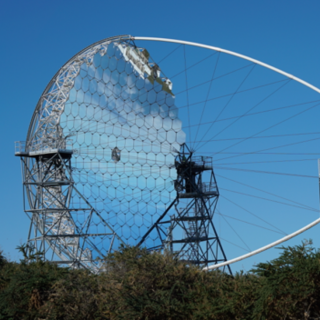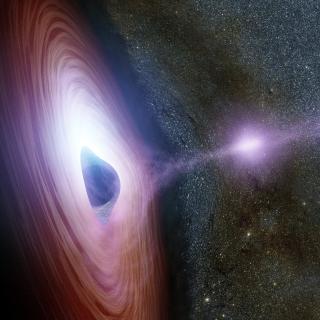Bibcode
Otero-Santos, J.; Acosta-Pulido, J. A.; Becerra González, J.; Raiteri, C. M.; Larionov, V. M.; Peñil, P.; Smith, P. S.; Ballester Niebla, C.; Borman, G. A.; Carnerero, M. I.; Castro Segura, N.; Grishina, T. S.; Kopatskaya, E. N.; Larionova, E. G.; Morozova, D. A.; Nikiforova, A. A.; Savchenko, S. S.; Troitskaya, Yu V.; Troitsky, I. S.; Vasilyev, A. A.; Villata, M.
Bibliographical reference
Monthly Notices of the Royal Astronomical Society
Advertised on:
3
2020
Citations
53
Refereed citations
51
Description
We report on quasi-periodic variability found in two blazars included in the Steward Observatory Blazar Monitoring data sample: the BL Lac object 3C 66A and the Flat Spectrum Radio Quasar B2 1633+38. We collect optical photometric and polarimetric data in V and R bands of these sources from different observatories: St. Petersburg University, Crimean Astrophysical Observatory, WEBT-GASP, Catalina Real-Time Transient Survey, Steward Observatory, STELLA Robotic Observatory, and Katzman Automatic Imaging Telescope. In addition, an analysis of the γ-ray light curves from Fermi-LAT is included. Three methods are used to search for any periodic behaviour in the data: the Z-transform Discrete Correlation Function, the Lomb-Scargle periodogram and the Weighted Wavelet Z-transform. We find pieces of evidence of possible quasi-periodic variability in the optical photometric data of both sources with periods of ̃3 yr for 3C 66A and ̃1.9 yr for B2 1633+38, with significances between 3σ and 5σ. Only B2 1633+38 shows evidence of this behaviour in the optical polarized data set at a confidence level of 2σ-4σ. This is the first reported evidence of quasi-periodic behaviour in the optical light curve of B2 1633+38. Also, a hint of quasi-periodic behaviour is found in the γ-ray light curve of B2 1633+38 with a confidence level ≥2σ, while no periodicity is observed for 3C 66A in this energy range. We propose different jet emission models that could explain the quasi-periodic variability and the differences found between these two sources.
Related projects

Particle Astrophysics
The members of the Particle Astrophysics Group of the IAC participate actively in three large international collaborations of high-energy astrophysics: AMS-02 (Alpha Magnetic Spectrometer), the Cherenkov radiation telescopes MAGIC I and II and the Cherenkov Telescope Array Observatory ( CTAO). We also participate in the ASTRI mini-array, the gamma
Mónica Luisa
Vázquez Acosta

Variability in Active Galactic Nuclei: Multifrecuency Studies
Active Galactic Nuclei (AGN) are characterized by a strong emission coming from a very compact region (only few pcs) at the galaxy center. Blazars form a class of AGN, characterized by high luminosity in a broad frequency range, from radiofrequencies to high energies (X-rays and γ -rays), as well as extreme variability and high polarization at
José Antonio
Acosta Pulido